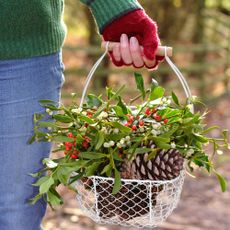Dividing Lily Plants: Learn When And How To Transplant Lilies


Lilies are a symbol of peace and traditionally represent chastity, virtue, devotion, and friendship depending upon the color. Lilies are cherished gift flowers and power houses of the perennial garden. Flower growers know that lilies in the garden naturalize and produce more and more blooms season after season.
The secret is dividing lily plants. Unlike a lot of other bulbs, however, lilies never go completely dormant, so lily transplanting can be a little tricky. Learn the tips on how to transplant lilies and divide them for even more of these exotic looking blooms.
Dividing Lily Plants
It doesn’t matter if they are Asiatic or Oriental; lilies bring serenity and beauty to any landscape. Most bulb flowers undergo a process called naturalization over time. This is when the plant produces more bulbs which grow and mature under the soil. The original bulbs will slowly fizzle out and either stop producing blooms or grow smaller flowers.
As the newly formed bulbs get older, they will become the center of the action. These need to be lifted and transplanted to make new stands of vigorous blooms. In most zones, you can lift the bulbs and separate them, then instantly plant them to overwinter in the ground. This is recommended, as the bulbs never go completely dormant and it's not easy to keep them "fresh" all winter long.
Only gardeners in the coldest climes will need to store their bulbs indoors and “fool” them with a chilling period before planting outdoors in spring.
When to Move Lilies
Lilies produce from bulbs and need to be divided and transplanted in the fall for the best results. Experts say late September or early October is when to move lilies. Immediately start transplanting lily bulbs once they have been lifted.
The best time to transplant lilies will depend on your zone. Some plants will last later into the season and should be allowed to remain with foliage intact until the last possible date before frost. This way the plant can gather energy to store in the bulb for massive blooms. A few weeks before your local date of your first frost, you should have division of lilies on your list of fall chores.
Gardening tips, videos, info and more delivered right to your inbox!
Sign up for the Gardening Know How newsletter today and receive a free download of our DIY eBook "Bring Your Garden Indoors: 13 DIY Projects For Fall And Winter".
This doesn’t have to be done every year, but you should undertake the task every two to three years for the best lily stands. If you are in doubt as to the best time to transplant lilies, dig them up when the foliage starts to yellow and proceed to separate and replant them.
How to Transplant Lilies
Transplanting lilies is easy. Cut stems to 5 or 6 inches (13-15 cm.) above the ground. Dig several inches (8 cm.) around the patch of plants and 12 inches (31 cm.) down. This will ensure that you get all the bulbs without damaging them with your spade or garden fork. Gently separate each bulb and its attending bulblets, which are tinier versions of a bulb.
At this time you can cut the stem to just above the lily bulb. Work quickly so your bulbs do not dry out. The best time of day is morning when temperatures are cooler and soil and air contains some moisture.
Plant the larger bulbs under 5 to 6 inches (13-15 cm.) of soil, while the baby bulblets should be planted just under a few inches (8 cm.) of soil. Apply organic material several inches (8 cm.) over the planting zone to insulate the bulbs for winter.
Lilies look best in clumps. To achieve the effect, plant bulbs in groups of three or more. Space the bulbs 8 to 12 inches (20-31 cm.) apart. In spring, remove the mulch material as soon as you see shoots poking through.

Bonnie Grant is a professional landscaper with a Certification in Urban Gardening. She has been gardening and writing for 15 years. A former professional chef, she has a passion for edible landscaping.
-
 Monstera Esqueleto Care Guide
Monstera Esqueleto Care GuideMonstera esqueleto is a high-drama houseplant with natural holes in its leaves. It loves to climb and enhance your living space with its big evergreen presence.
By Susan Albert
-
 6 Last-Minute Holiday Decorations You Can Make Using Garden Greenery
6 Last-Minute Holiday Decorations You Can Make Using Garden GreeneryCreate a beautifully festive interior with these foraged foliage decor ideas that will add holiday magic with just a few minutes' work.
By Melanie Griffiths